Three species of Phyllobius have simple, untoothed femora; P.viridicollis (Fab.), P.roboretanus Gredler and P.virideaeris (Laicharting). P.viridicollis is a mainly midland and northern species and is almost completely without scales except for the sides of the pronotum and sparse metallic green scales along the suture. P.roboretanus and P.virideaeris are completely covered with brilliant metallic green scales and it is unlikely that even a very worn specimen of either could be confused with P.viridicollis
We have described both species as brilliant metallic green but locally P.virideaeris sometimes have a bluish tinge and can be completely blue (picture to follow) but since the external morphological differences between the species as described below are very clear we would not recommend this as a diagnostic character.

P.roboretanus
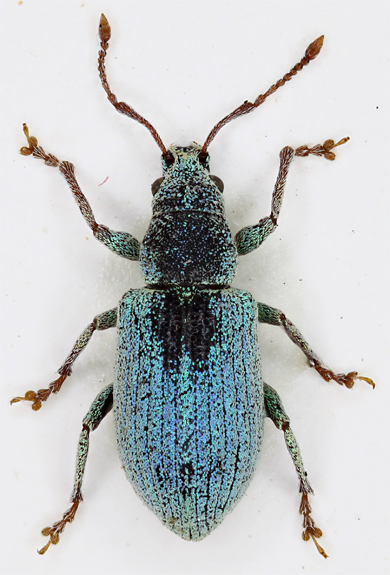
P.virideaeris
P.roboretanus and P.virideaeris can be separated by three easily seen characters;
Elytral Apex
P.roboretanus: Steeply inclined, almost horizontal. Fig 1.
P.virideaeris: Evenly and less strongly curved, never close to horizontal. Fig 2.
Abdominal Ventrites
P.roboretanus: With sparse setae or pubescence, without scales and underlying cuticle visible. Fig 1.
P.virideaeris: Covered with metallic green scales obscuring the underlying cuticle. Fig 2.
Marked by the arrow on the figures below. It should be noted that the abdominal ventrites only should be examined as the underside of thorax are clothed with scales in both species.
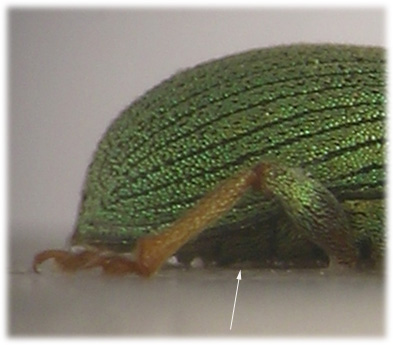
Fig.1 P.roboretanus
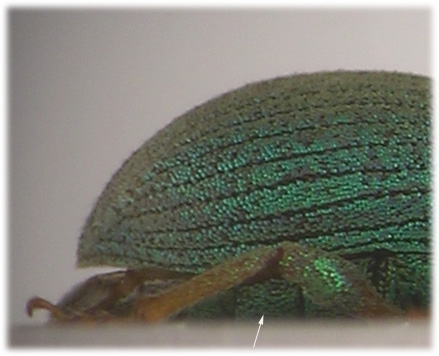
Fig.2 P.virideaeris
Sutural Striae (Morris, 1997)
P.roboretanus: Straight alongside scutellum.
P.virideaeris: Curved outwardly outside scutellum.
In both species the curve may be obscured by scales.
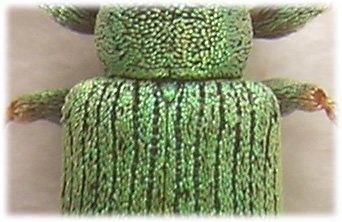
P.roboretanus
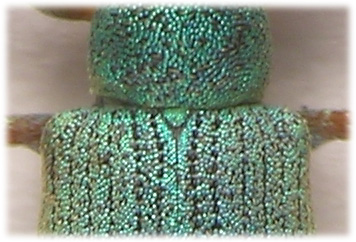
P.virideaeris